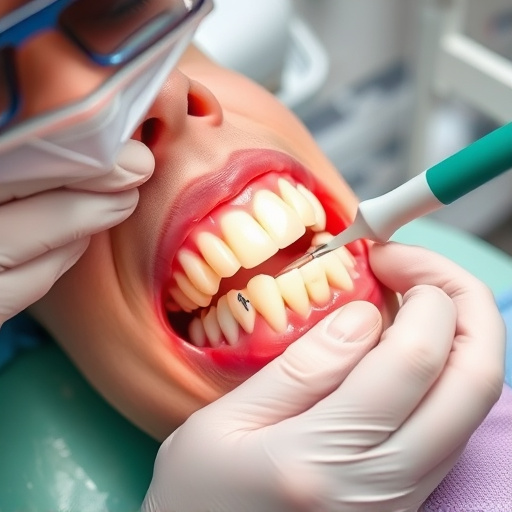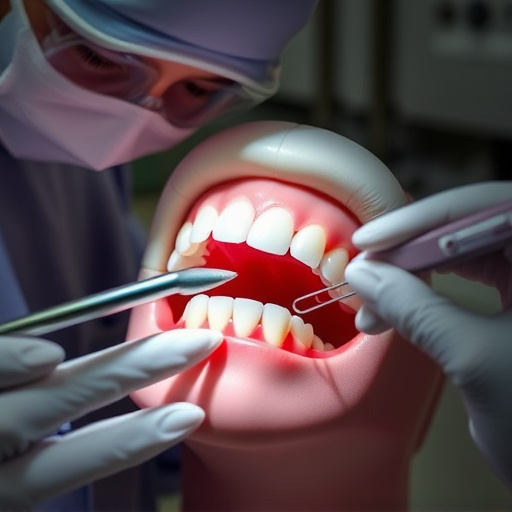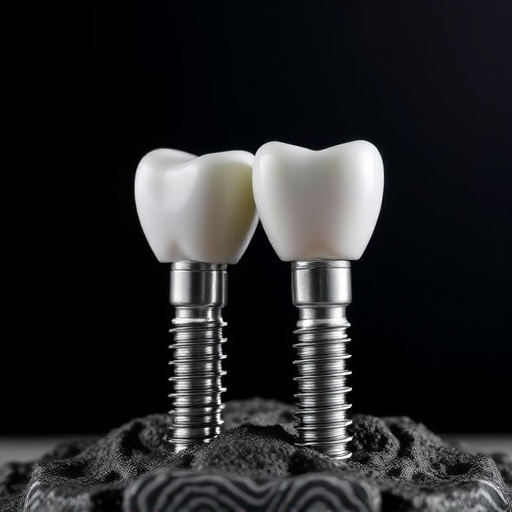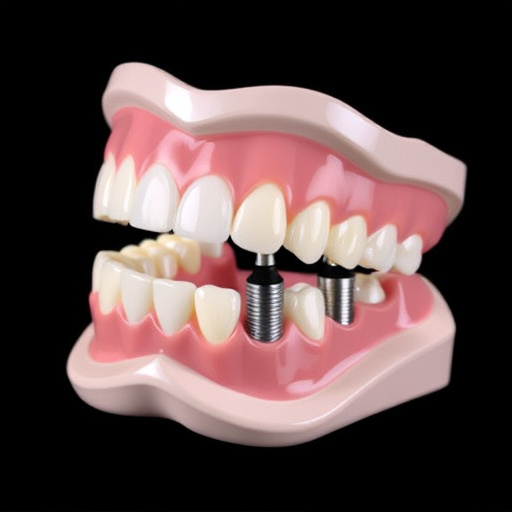Single tooth implants, aided by digital imaging like 3D scanning and CBCT, offer precise, permanent replacements for missing teeth. This technology enhances accuracy, patient comfort, and success rates, enabling dentists to plan surgeries with minimal invasiveness. Digital tools streamline post-surgery care, aligner design, and immediate restorations after wisdom tooth removal, benefiting patients seeking alternatives to dentures or bridges.
Single tooth implants offer a reliable solution for replacing missing teeth, enhancing oral health and aesthetics. This article provides a comprehensive overview of digital imaging’s crucial role in the success of single tooth implant surgeries. By leveraging advanced technologies, dentists achieve unparalleled precision, ensuring accurate fit and long-term functionality. We explore the benefits and impressive success rates associated with digital-assisted implants, highlighting their significance in modern dental practices.
- Understanding Single Tooth Implants: A Comprehensive Overview
- Digital Imaging's Role in Implant Surgery Precision
- Benefits and Success Rates of Digital-Assisted Implants
Understanding Single Tooth Implants: A Comprehensive Overview

Single tooth implants offer a modern solution for replacing missing teeth, providing a permanent and aesthetically pleasing alternative to traditional dentures or bridges. This advanced dental procedure involves surgically placing a small titanium post into the jawbone, which serves as an artificial root. The implant is then topped with a custom-made crown, designed to match the patient’s natural teeth in both appearance and function.
This comprehensive approach ensures stability and longevity, mirroring the strength and durability of natural teeth. Family dentistry or general dentistry practices often utilize digital imaging techniques, such as 3D scanning, to plan and execute these implants precisely. These advanced technologies enable dentists to visualize the jaw structure, assess bone density, and determine the optimal implant placement, enhancing both procedure accuracy and patient outcomes. Additionally, when a wisdom tooth removal is necessary, single tooth implants can be strategically placed to restore oral functionality and esthetics immediately.
Digital Imaging's Role in Implant Surgery Precision

Digital imaging plays a pivotal role in enhancing the precision of single tooth implant surgeries. With advanced technologies like 3D cone-beam computed tomography (CBCT), dentists can obtain detailed, three-dimensional images of the patient’s jaw and oral structures. This enables them to plan implants with unparalleled accuracy, ensuring the right fit from the outset. By visualizing the exact anatomy, including bone density, nerve pathways, and surrounding teeth, dental professionals can navigate complex scenarios with confidence.
This level of detail is crucial for successful tooth extractions or repair procedures. Digital imaging supports the placement of implants in a way that minimizes risks and maximizes success rates. It provides a clear roadmap for surgeons, enabling them to make informed decisions and adapt strategies in real-time during surgeries, ultimately leading to better patient outcomes in emergency dental care situations.
Benefits and Success Rates of Digital-Assisted Implants

Single tooth implants backed by digital imaging support have revolutionized dental restoration. This advanced technology offers several benefits for both patients and dentists. Digital X-rays and 3D scanning provide precise, detailed images of the jawbone and teeth, enabling dentists to plan and execute implant surgeries with unparalleled accuracy. This level of precision enhances success rates, often exceeding 95%, by ensuring proper positioning and osseointegration—the fusion of the implant with bone tissue.
Moreover, digital-assisted implants offer a more comfortable and efficient patient experience. With accurate pre-operative planning, dentists can minimize invasive procedures like tooth extractions and reduce the need for additional treatments post-surgery. This is particularly beneficial for patients who require immediate replacements or those considering implants as an alternative to traditional bridges or dentures. Digital imaging also streamlines the process of designing clear aligners for post-implant orthodontic adjustments, further enhancing patient satisfaction and treatment outcomes.
Single tooth implants, aided by digital imaging technologies, represent a significant advancement in dental restoration. This innovative approach ensures precision surgeries, enhances success rates, and offers patients a comfortable, efficient solution for replacing missing teeth. By leveraging digital tools, dentists can achieve unparalleled accuracy, making single tooth implants a top choice for those seeking long-lasting, natural-looking replacements.














